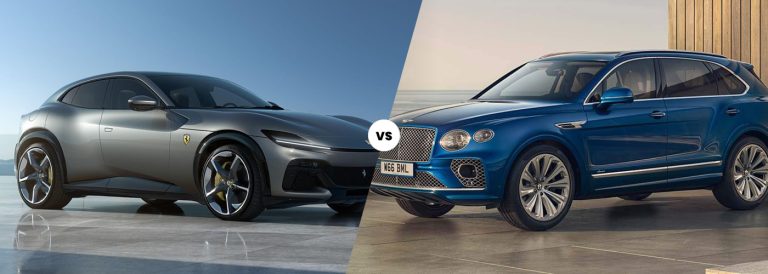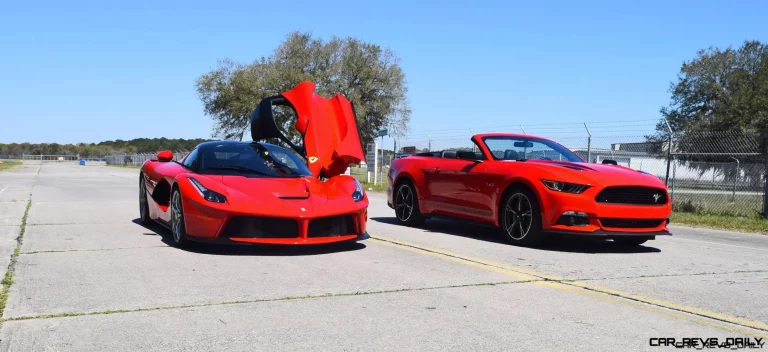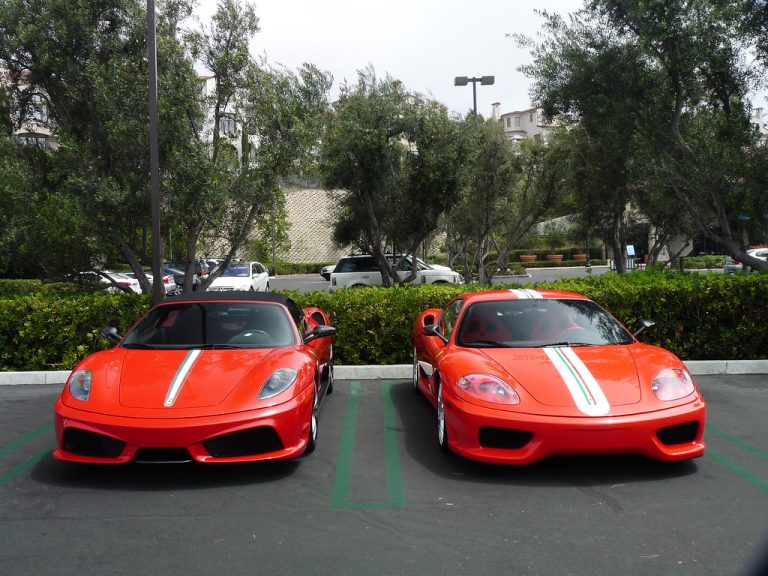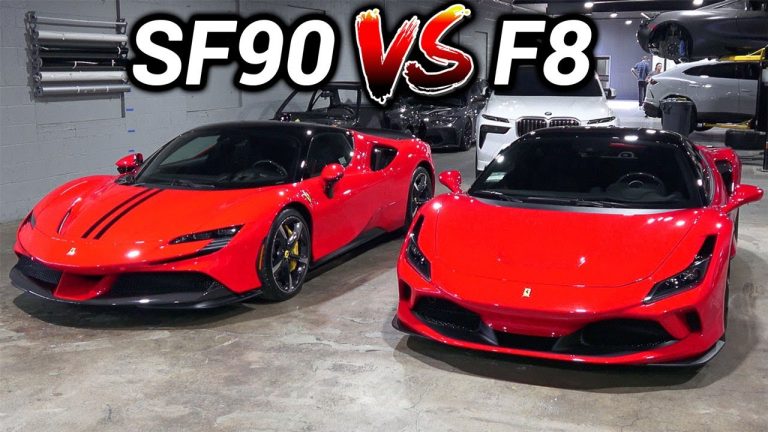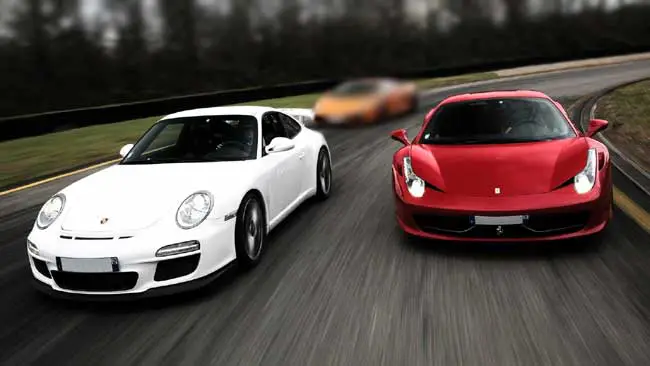Ferrari vs Corvette: Which Is Better?
When it comes to high-performance sports cars that stir passion and provoke heated debates, few rivalries run as deep as Ferrari versus Corvette. This blog post directly pits these two iconic nameplates against one another on all fronts – design and styling, engineering and performance, brand cache, and ownership experiences. From dream Ferrari models to the latest Corvette rocket, we’ll explore which manufacturer builds the superior performance weapon for the roads and track.
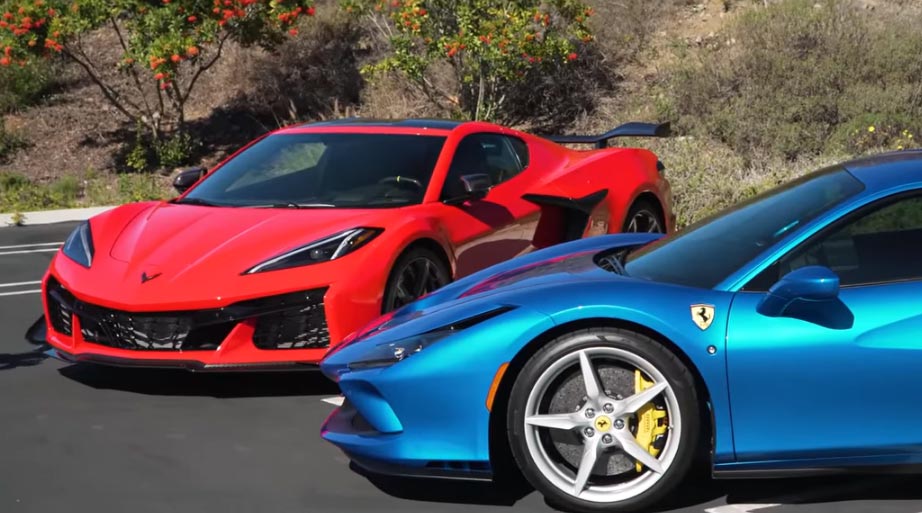
Ferrari vs Corvette: Which is Better?
Here we will explore the nuances of Ferrari and Corvette, covering performance, design, luxury, and overall driving experience.
1. Performance
Ferrari: Known for its Italian heritage, Ferrari has long been synonymous with speed, agility, and precision. Ferraris typically feature high-revving engines with impressive horsepower and torque figures, delivering exhilarating acceleration and top speeds. The brand’s focus on track-ready dynamics means that handling and braking are top-notch, offering an engaging driving experience.
Corvette: The Chevrolet Corvette, America’s sports car, brings formidable performance at a more accessible price point. Recent models, including the mid-engine C8, boast impressive power outputs that challenge those of exotic supercars. Corvettes are celebrated for their balanced handling, potent acceleration, and high top speeds, making them highly competitive on both road and track.
2. Design and Aesthetics
Ferrari: Ferraris are the epitome of Italian design, featuring sleek, aerodynamic profiles and an unmistakable aesthetic appeal. From the iconic prancing horse emblem to the aggressive front fascias and sculpted bodies, Ferraris exude luxury and performance. The interior design matches this luxury, with a focus on high-quality materials, craftsmanship, and advanced technology.
Corvette: Corvette has evolved its design language to match its performance credentials, especially with the introduction of the mid-engine layout in the C8. This shift has brought a more exotic and aggressive appearance, narrowing the aesthetic gap between it and European counterparts. The interiors have seen significant upgrades over the years, with a focus on technology, comfort, and quality materials, though some argue it still trails the meticulous craftsmanship of Ferrari.
4. Luxury and Comfort
Ferrari: Beyond performance, Ferraris are built with a keen eye on luxury. The cabins are meticulously crafted with the finest leathers, carbon fiber, and other high-end materials. Ferrari also offers extensive customization options, allowing buyers to tailor their vehicle to their exact specifications and tastes, enhancing the luxury experience.
Corvette: The Corvette offers a comfortable and technologically advanced interior, with recent models making significant strides in material quality and comfort features. While it may not match the bespoke nature of Ferrari’s offerings, the Corvette provides a high level of luxury and customization at a fraction of the price.
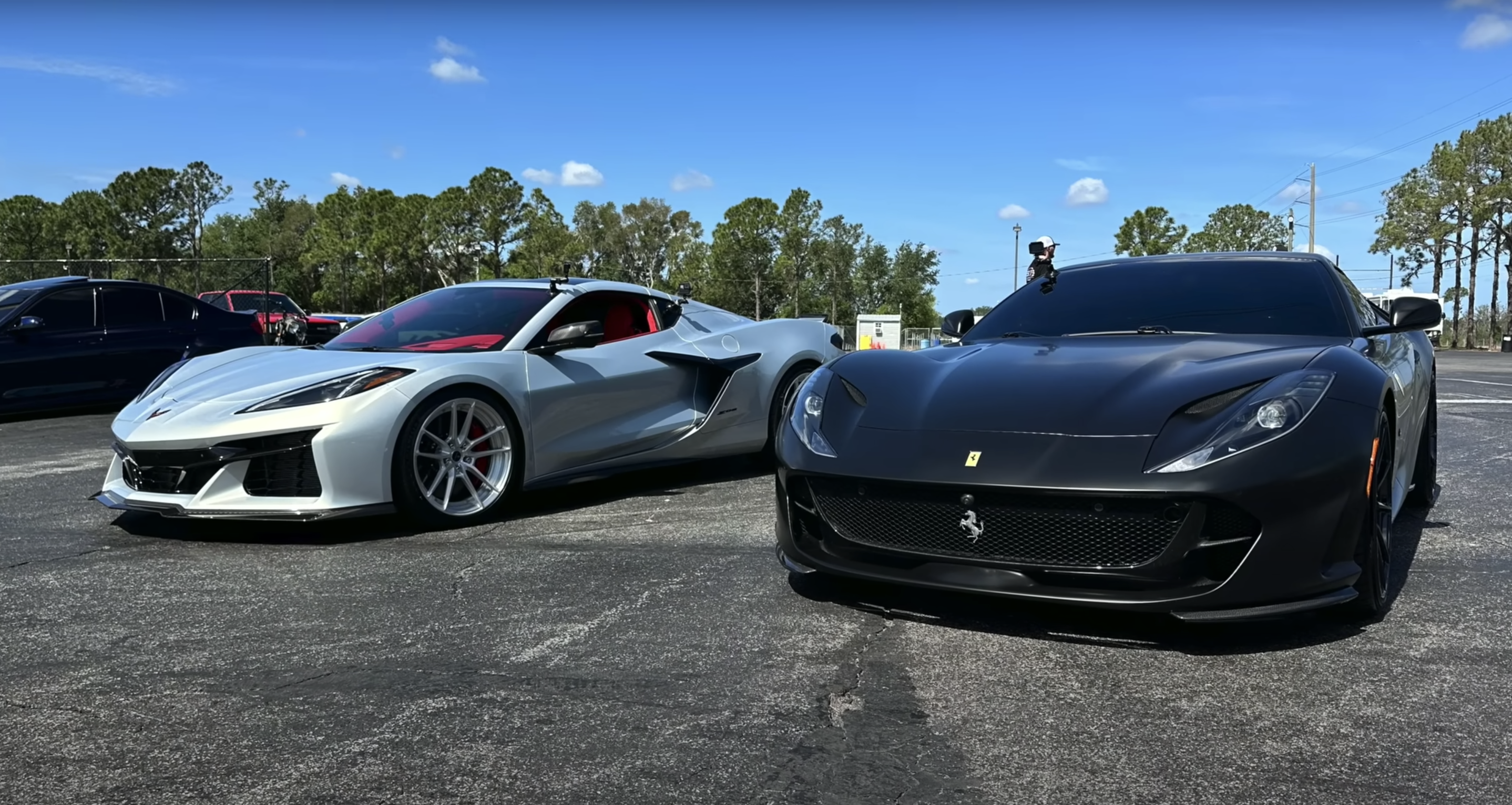
5. Driving Experience
Ferrari: Driving a Ferrari is often described as an emotional experience, combining raw power with precision engineering to create a sense of connection between driver, car, and road. The brand’s emphasis on driving dynamics ensures that each model offers a unique and exhilarating drive.
Corvette: The Corvette delivers an American take on the sports car experience, with a focus on raw horsepower, torque, and the unmistakable sound of its V8 engine. The driving experience is both thrilling and accessible, making it a favorite among enthusiasts who value performance and usability.
6. Brand Heritage and Racing Pedigree
Ferrari: Ferrari’s foundation is deeply rooted in motorsport, particularly Formula 1, where it has an illustrious history. This racing pedigree influences every aspect of their road cars, from design to technology, embedding a piece of this legacy into each model. Ferrari’s brand is associated with exclusivity, Italian craftsmanship, and a passion for speed, which is reflected in its selective production numbers and high-profile clientele.
Corvette: While Corvette also boasts a rich racing heritage, particularly in endurance racing with notable success in the Le Mans 24 Hours, its brand philosophy is more democratically inclined, aiming to bring high performance to a wider audience. The Corvette’s image is tied to American ingenuity, offering supercar-level performance without the supercar price tag.
7. Technological Innovations
Ferrari: Ferraris are often at the forefront of automotive technology, incorporating advanced materials like carbon fiber, cutting-edge aerodynamics, and innovative powertrain technologies. Their engines, whether V8s or V12s, are marvels of engineering, delivering unmatched performance metrics. Ferrari also invests heavily in hybrid technology, aiming to combine performance with improved efficiency.
Corvette: The Corvette has made significant technological leaps, particularly with the introduction of the mid-engine C8, which represents a major shift in design philosophy to enhance weight distribution and handling. The use of materials like aluminum and carbon fiber in its construction improves performance and efficiency. The Corvette also features advanced driver assistance technologies and infotainment systems, making it a more practical choice for daily driving.
8. Market Positioning and Accessibility
Ferrari: Ferrari positions itself as a purveyor of luxury sports cars for the elite, with a focus on exclusivity. The brand limits production to maintain demand and exclusivity. Ferraris are often seen as symbols of status and success, with price tags to match, often running into the hundreds of thousands or even millions of dollars.
Corvette: The Corvette, on the other hand, is positioned as a performance bargain. It is designed to be accessible to a broader audience, providing supercar-like performance at a price point that, while not inexpensive, is far less than that of most Ferraris. This accessibility has helped build a diverse and passionate fan base around the Corvette, emphasizing value without compromising on performance.
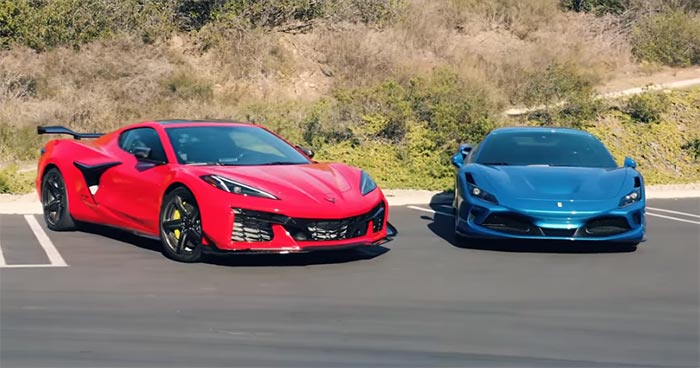
9. Customer Experience and Customization
Ferrari: Ferrari offers a highly personalized buying experience, allowing customers to customize nearly every aspect of their vehicle through the Tailor Made program. This can include unique colors, materials, and finishes, making each Ferrari a bespoke creation. The brand also fosters a sense of community among owners through exclusive events, driving programs, and club memberships.
Corvette: While the Corvette offers a range of customization options, from exterior colors to interior finishes, the level of personalization does not reach the bespoke depth of Ferrari. However, Chevrolet has worked to enhance the buying experience for Corvette owners, offering museum delivery, driving experiences, and a supportive community of enthusiasts and clubs.
10. Future Orientation and Model Evolution
Ferrari: Ferrari is committed to innovation, with plans to introduce more hybrid and potentially fully electric models. This reflects the brand’s dedication to leading in performance and luxury while addressing environmental concerns and changing automotive landscapes.
Corvette: The Corvette is also looking toward the future, with rumors and confirmed plans for hybrid versions of the C8 and speculation about fully electric models. These developments signify Chevrolet’s commitment to evolving the Corvette in line with emerging technologies and market demands.
Did Corvette Copy Ferrari?
The answer’s a bit nuanced. The Corvette took inspiration from Ferrari, especially for the C8 generation. Here’s the breakdown:
-
Learning from the Competition: General Motors engineers themselves admitted to buying a Ferrari 458 engine to understand its design. This knowledge went into developing the C8’s LT6 engine.
-
Shared Features: The C8 Corvette and Ferrari 458 both have mid-engine layouts, and high-revving, naturally-aspirated flat-plane crank V8s, which were a first for Corvette. This focus on similar features suggests the Corvette learned from what made the Ferrari successful.
-
Not a Replica: It’s important to note that the Corvette retains its own design identity. While they share some technical aspects, they have distinct styling and overall feel.
So, the Corvette didn’t outright copy Ferrari, but it definitely used them as a benchmark and incorporated some successful design elements into the C8.
Frequently Asked Questions
How did the eighth-generation Corvette get its inspiration?
The eighth-generation Corvette drew inspiration from dissecting a Ferrari 458 engine, leading to a departure from traditional designs.
How does the power of the Ferrari F8 compare to the base-level Corvette?
The Ferrari F8 boasts 710 horsepower, surpassing the base-level Corvette with 495hp, showcasing contrasting power levels.
What is the horsepower of the Corvette C8 Z06 and what influenced it?
The Corvette C8 Z06 features 670 horsepower, influenced by Ferrari, marking the evolution in new Corvettes.
How does the Corvette balance performance and fuel efficiency despite its weight?
The C8 achieves impressive fuel efficiency, striking a balance between performance and efficiency.
What wheel package does the Corvette C8 adopt and what does it symbolize?
The Corvette C8 adopts a standard 20-inch wheel package, symbolizing a blend of modern trends and classic appeal.

Hi! I’m Larry Gibbs, studying mechanical engineering with a focus on cars. I really love Ferraris and write blog posts about the latest car stuff. When not studying or blogging, I’m usually on a road trip exploring new places. I also enjoy playing football and watching movies. Life’s an adventure, and I’m all about enjoying the ride!

